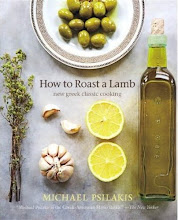 Today my new crop of small grape tomatoes wowed me..!
Today my new crop of small grape tomatoes wowed me..!The four plants on my terrace garden produced a bountiful early harvest that I planned to use for salads and oven roast the rest with garlic, basil and olive oil for a side to my grilled pork loin.
But before I sliced and diced these ruby-red perfectly shaped tomatoes, I was inspired to photograph them with some props that I had be anxious to use.
I wanted to show the simple beauty of these elegant fruits in a somewhat different manner. It was a languid, sunny Sunday afternoon and the light in my studio was just right as I set up my favorite glossy black table for a shoot of my favorite fruits.

Tomato culture and history ran through my head as I set up for the shoot.
Thomas Jefferson was a pioneer in tomato culture. He documented planting this relatively unfamiliar vegetable in his kitchen garden from 1809, the first summer of his retirement, until his death in 1826. In his "Notes on the State of Virginia" in 1782, Jefferson noted that tomatoes
were now grown in many Virginia gardens.
 A New World species, the first tomatoes grown in Europe were called “love apples” because they were related botanically to the mandrake or “love plant” which was noted in the Bible for its reputed aphrodisiac qualities.
A New World species, the first tomatoes grown in Europe were called “love apples” because they were related botanically to the mandrake or “love plant” which was noted in the Bible for its reputed aphrodisiac qualities.

In 1553, Swiss naturalist Konrad Gessner depicted the small-fruited “love apple” in a watercolor, and identified it in Latin as “poma amoris” and “pomme d'amour in French. They are similar to the small-fruit tomatoes that were grown mostly for ornament.
 For me, these sweet, brilliant red tomatoes are ideal for adding to salads and sauces or simply snacking as I water my garden. But before I gobbled them down, they were perfect models for a sunny afternoon of photography.
For me, these sweet, brilliant red tomatoes are ideal for adding to salads and sauces or simply snacking as I water my garden. But before I gobbled them down, they were perfect models for a sunny afternoon of photography.
were now grown in many Virginia gardens.
 A New World species, the first tomatoes grown in Europe were called “love apples” because they were related botanically to the mandrake or “love plant” which was noted in the Bible for its reputed aphrodisiac qualities.
A New World species, the first tomatoes grown in Europe were called “love apples” because they were related botanically to the mandrake or “love plant” which was noted in the Bible for its reputed aphrodisiac qualities.
In 1553, Swiss naturalist Konrad Gessner depicted the small-fruited “love apple” in a watercolor, and identified it in Latin as “poma amoris” and “pomme d'amour in French. They are similar to the small-fruit tomatoes that were grown mostly for ornament.
 For me, these sweet, brilliant red tomatoes are ideal for adding to salads and sauces or simply snacking as I water my garden. But before I gobbled them down, they were perfect models for a sunny afternoon of photography.
For me, these sweet, brilliant red tomatoes are ideal for adding to salads and sauces or simply snacking as I water my garden. But before I gobbled them down, they were perfect models for a sunny afternoon of photography. 









5 comments:
Beautiful indeed, thanks also to the way you add value by your photographic art! Pomodoro in Italy, golden... !
Love this series...you are so inspirational!!! xo
WOW! These photos look so modern. I love the bright red contrast against the sleek black. The one with what looks like a glass juicer behind it.
These really are just fabulous, Terrie! I didn't see them earlier, and I saw a flickr picture that had me scooting over to see what else you did--I love these!! Great eye, as always. So creative. Did you eat them all then!!? I would have wanted to pop 'em in my mouth! LOL
Merci mille fois Peter, Stuart, Cory and Sue for your comments and visits...
I did indeed pop many of these tomatoes for a treat after I finished shooting these images...a bonus in being a food photographer in your own studio...lol
Post a Comment